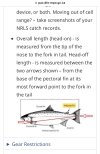Capt_Ed
Crew Member
So the discussion was on the dock today about measuring salmon ,I've always thought that it was a flat tape from nose to the middle of the tail fork. Now the creel survey young fellow measures along the fish following the thickness of the fish which in today's case was 5 cm difference. Can't find it in the regs.


